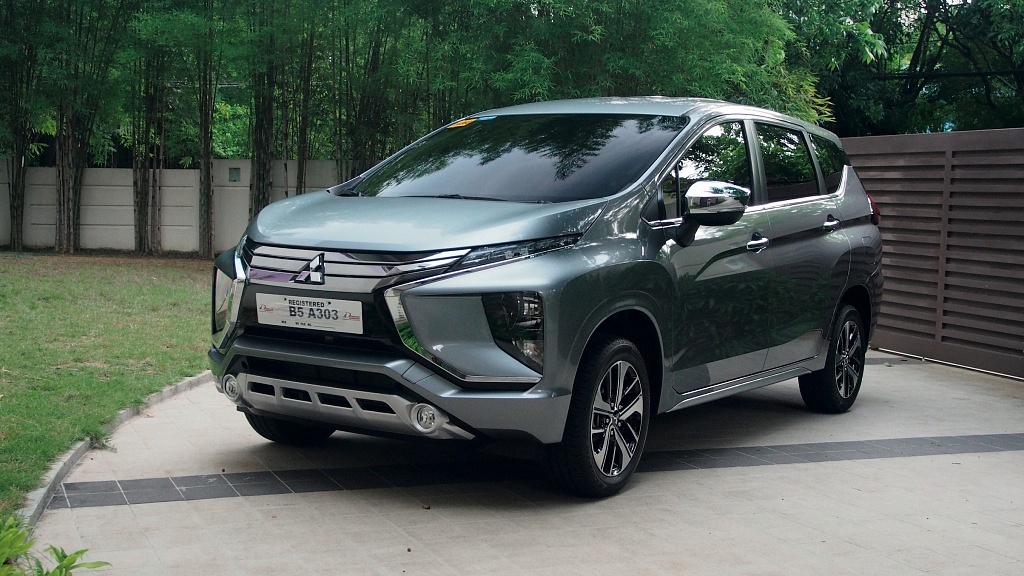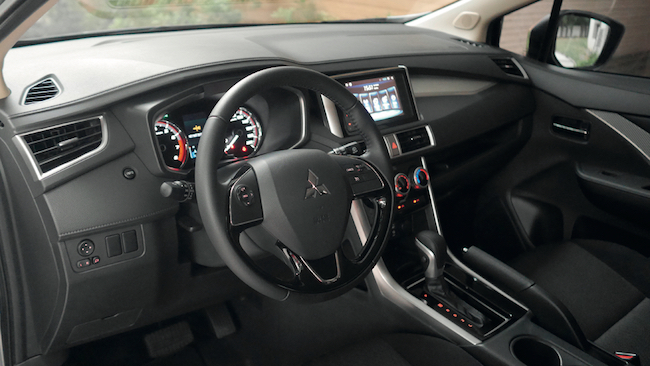
Remember the Mitsubishi Adventure? From the late ’90s to the early 2000s, it was the best-selling AUV (Asian utility vehicle) in our country, second only to the Toyota Revo. To this day, they are still a common sight in everyday traffic. It became such an iconic Mitsubishi staple that the Japanese carmaker only stopped production in 2018, thereby ending the Adventure’s 20-year venture. The trend for family cars had shifted to the more minivan-like MPV (multi-purpose vehicle), and Toyota has for many years dominated the highly profitable segment by selling not one but two entries, the Innova and the Avanza. For years, Mitsubishi did not have an answer, until last year, when they introduced the all-new Mitsubishi Xpander, the spiritual successor to their discontinued AUV, and Mitsubishi’s take on what the MPV of the future should look like.
The Xpander is an excellent counter punch to Toyota’s offerings. The sheet metal sits squarely between the Innova and Avanza. Its wheelbase is 25 mm longer than the Innova’s, and yet it has a cabin that is bigger than the Avanza’s. So for those on the hunt for an MPV that is not too big nor too small, the Xpander is your Goldilocks minivan. The Xpander’s look is a reminder that we are living in the future. Rarely do production vehicles resemble their prototype versions when released at auto shows, but the Xpander looks almost exactly like the XM Concept that was shown to the world in the 24th Gaikindo Indonesia International Auto Show.

The body resembles a thick slab of marble with the upper corners chiseled away. The Xpander takes Mitsubishi’s Dynamic Shield concept and makes a bold and unapologetic statement with it. There’s a creased bonnet that is deliberately stubby, a narrow grille of chrome blades that terminates with slits of LEDs, oversized, angular headlights that are set deep in the bumper, and at the bottom, a silver scuff plate that houses round fog lamps. The angular sinews in the front are highlighted in chrome by opposing Cs. The rest of the Xpander’s body is just as futuristic, with key-shaped rear quarter windows, chrome-wrapped side mirrors on stems, a tailgate spoiler, and taillights that seem to be giving the thumbs up sign when viewed from the rear. The 16-inch alloy wheels are a tad small for our preference, but the five-spoke pinwheel complements the overall design very well. The look has been met with universal approval, and has become one of the Xpander’s top selling points. The consensus is that it is unlike anything we have seen before.
Powering the Xpander is a 1.5-liter, inline-4 petrol MIVEC engine that only has 105 hp and 141 Nm of torque. On paper, the numbers may seem frugal, considering the gross vehicle weight of 1,780 kg it has to pull when the MPV is filled to capacity with passengers and cargo. But surprisingly, even with five people on board, the power plant was sufficiently potent. Light taps on the accelerator propelled us with vigor. Overtaking on the highway made the engine audible, but for the most part, it remained demure with its revolutions. We expected the very basic, 4-speed AT transmission to have poor timing, but it simply was not the case. While it is no racer on the highway, it can hold its own against other MPVs and PPVs. You can chalk it up to good tuning between motor and gearbox, but when rubber meets road, somehow this humble combination just works. Fuel efficiency is not quite on par with its diesel competitor Innova, though, because in our test, it registered only 4.8 km/L on bad traffic days.

The Xpander drives like a sedan in that it is easy to steer and handles narrow streets like a much smaller car would. Its only fault is that because it is almost as tall as it is wide, there is quite a bit of body roll around sharp bends. But even with ordinary Macpherson struts and torsion beams, it offers a lithe and limber ride, ably going over broken asphalt and tall speed bumps without shaking the occupants too much.
The Xpander starts at P1,008,000 for the manual transmission GLX, while the GLX Plus with AT is at P1.088 million. Our test unit here is the GLS variant, and it is priced at P1.11 million. The GLS Sport sits atop the heap with cost of ownership at P1.175 million.
Priced to undercut the competition, the Xpander is a very well-rounded vehicle. It is versatile, practical, and best of all, it looks like something straight out of Voltes V or Daimos. It is exactly what this writer thought a futuristic car would look like growing up in the ’80s. Now that I am a family man fast approaching middle age, I am quite happy that not only have my childhood fantasies been realized, but that such a vehicle can satisfy my family’s needs, too. I must not be alone in this thinking, because the line of buyers is long for the Mitsubishi Xpander.






































